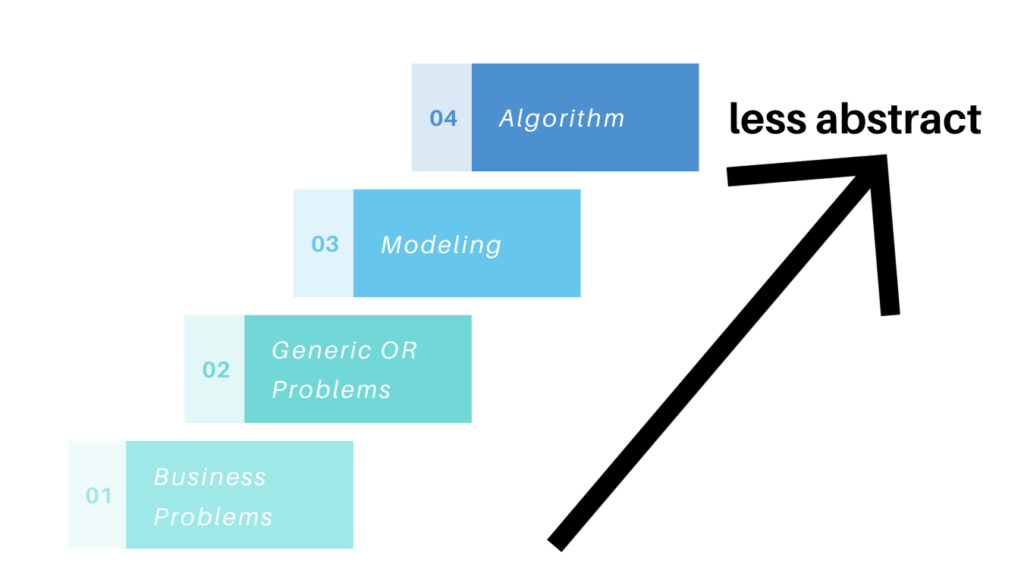Let’s face it, Operations Research can be a confusing field of study. When someone asks what my major is, I often need to explain what Operations Research is about. I always prepare two types of explanations. The first one is the short one, “oh, it is applied mathematics, sort of”, for those who I think cannot handle more than that (haha!). The second one is the elaborated one, hence me writing this article.
Operations Research (OR) is a discipline that involves the development and application of advanced analytical methods to improve complex decision-making. It is considered as a subfield of mathematical sciences, but also very closely related to industrial engineering as well as other disciplines like statistics, management science, and computer science. Maybe that’s what makes it confusing for some people when they first hear about it.
What OR offers is the effective systems design and operation decisions. Operations Researchers’ key weapons include optimization, simulation, and probability and statistics:
- Optimization – to achieve the best performance under the given circumstances and compare all the potential options by solving optimization problems.
- Simulation – to try out and test solutions before applying them by building simulation models or replications.
- Probability and statistics – to gain meaningful insights, assess risks, and make reliable predictions using data and statistical techniques.
Employing optimization, simulation, and probability and statistics, in general, the process of OR can be broadly broken down into five main steps:
- Identifying a problem that needs to be solved
- Constructing a model around the problem that resembles the real world and variables
- Using the model to derive solutions to the problem
- Testing each solution and analyzing its outputs
- Implementing the solution to the actual system
Operations Research in Practice
Operations researchers solve real-world problems that save people money and time. These problems are very diverse in nature and they may seem unrelated to one another. However, the main idea is always the same: solving these problems to make the best possible decisions. The process of solving a problem starts from defining the business problem (the most abstract), converting it into a well-known generic OR problem, formulating its mathematical model, to solving this model using some algorithms (the least abstract).


First, Operations Researchers start with understanding the business problems expressed by the clients. Examples of business problems can be found in different industries. Here are some possible problems may raise by clients:
- I am a hospital manager, how do I assign shifts to hospital staff?
- I am a trucking company manager, in what order should I schedule deliveries?
- I am starting a manufacturing company, where should I locate my factory?
Next, Operations Researchers convert a business problem to one of the well-known generic OR problems. The process of converting a business problem into a generic problem is I think the crucial step in OR. Some business problems are not easy to convert into a generic problem due to their complexity and high level of interaction between variables. However, once we get into this stage, solving the problem becomes easier assuming we have some standard procedures in mind. Here are some examples of well-known OR problems:
- Travelling Salesman Problem
- Shortest Path Problem
- Set Covering Problem
- Knapsack Problem
- Assignment Problem
Then, Operations Researchers formulate the generic problem into a mathematical model. This mathematical model allows us to represent the generic problem using mathematical notations and algebraic expressions. Once the problem is in its mathematical form, we can pass it to our algorithm. The famous modelling paradigm in OR includes:
- Linear programming
- Integer programming
- Mixed-integer programming
- Convex programming
Finally, Operations Researchers solve the problem using certain algorithms, either by employing a well-known algorithm or developing a novel one. Some of the well-known ones are:
- Simplex algorithm for linear programming problems
- Branch-and-X family (e.g. branch-and-bound and branch-and-out) and cutting plane algorithm for integer and mixed-integer programming problems
- Gradient projection and forward-backward algorithms for convex programming problems
Some problems are too difficult to solve and we just need to find a quick solution. Operations Researchers use greedy algorithms to accomplish this task. They do not guarantee optimality but they are fast. For example, Dijkstra’s algorithm for solving the shortest path problem.
I will be discussing each of these four steps in detail in four separate articles, so tune in!
Operations Researcher as a Service
The key message here is that outsourcing an Operations Researcher can help companies achieve the best decision, consider all available options, predict all possible outcomes and estimate risk. Additionally, Operations Research can be tailored to specific business processes or use cases to determine which techniques are most appropriate to solve the problem.
Operations Research is one of Meta Lab’s specialties. Contact us to explore our service related to Operations Research and get further information by sending an email to [email protected].




